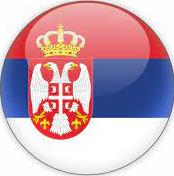Teaching/learning method
Discussion, team-based learning, pair work. Students will use fact sheets/cards.
Students work in a team or in pairs and then report to class their findings. Handouts with a Case study description/practical activity (role-play, argument, fact sheet) are distributed.
Resources for Obesity
Case study 3: Changing a negative communicative strategy into a positive one (communicating with a patient with obesity
Download the resource in 







Discussing about obesity
| The videoclip entitled What Not to Do presents a negative approach of the patient with obesity in terms of communication during a visit to the doctor’s. |
Discussion points
Watch the video and change the discussion into a motivating one.
In Pairs Roleplay the Doctor-Patient consultation (Positive approach)
Case study 4. My daughter is 16 and she is gaining weight
The case study focuses on doctors’ advice to parents of obese children, underlining the mother’s worries and the daughter’s attitude.
Download the resource in 







Discussion points
How can you differentiate between comments that are niggling, comments that focus on weight, comments that are negative, versus positive ones in advising parents of children who suffer from obesity?
Resources for Eating Disorders
The Inaccurate link between body ideals and health
https://www.ted.com/talks/nancy_n_chen_the_inaccurate_link_between_body_ideals_and_health/transcript
The video reflects on how the cultural histories of body ideals have changed over time. It offers a new way to view ourselves and our health by enhancing body diversity to close the gap between what's ideal and what's real.
Discussion points
How has the thin body come to represent the ideal?
How can obesity and public health campaigns increase stigma?


